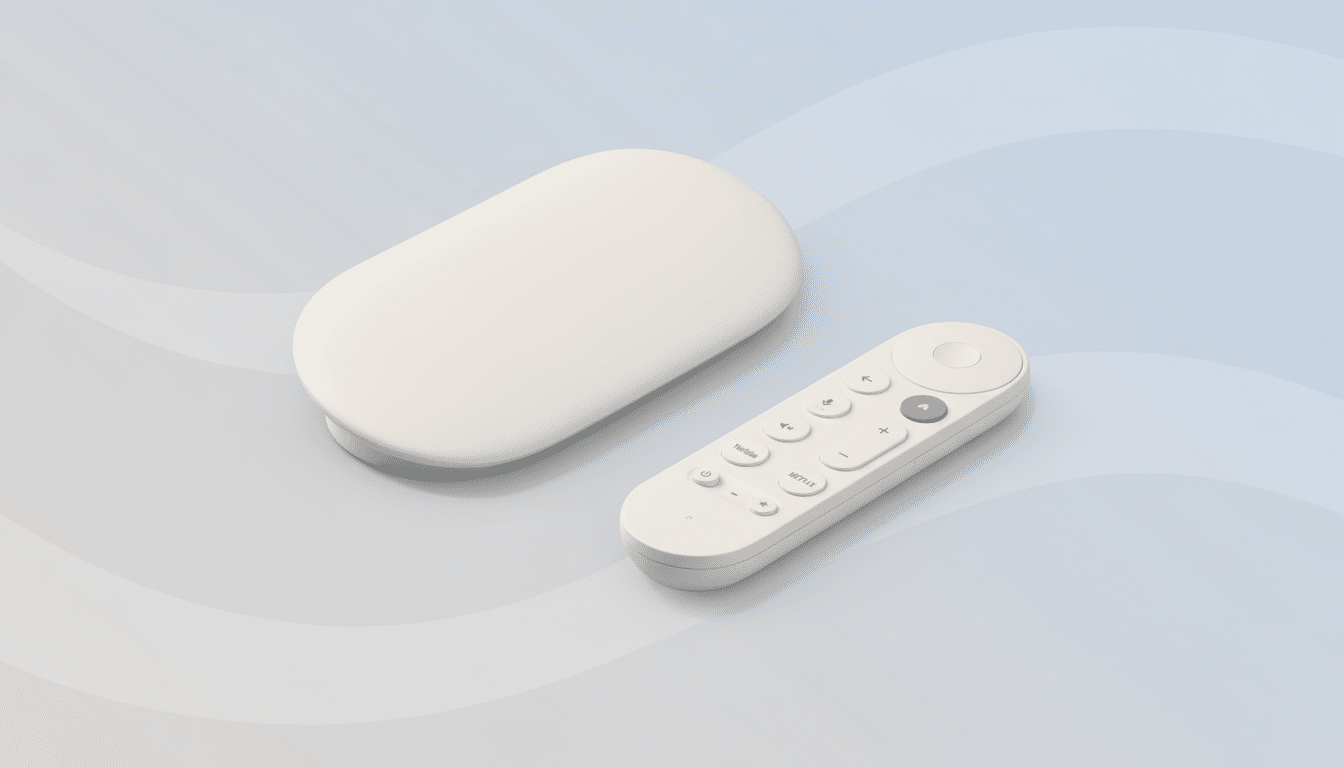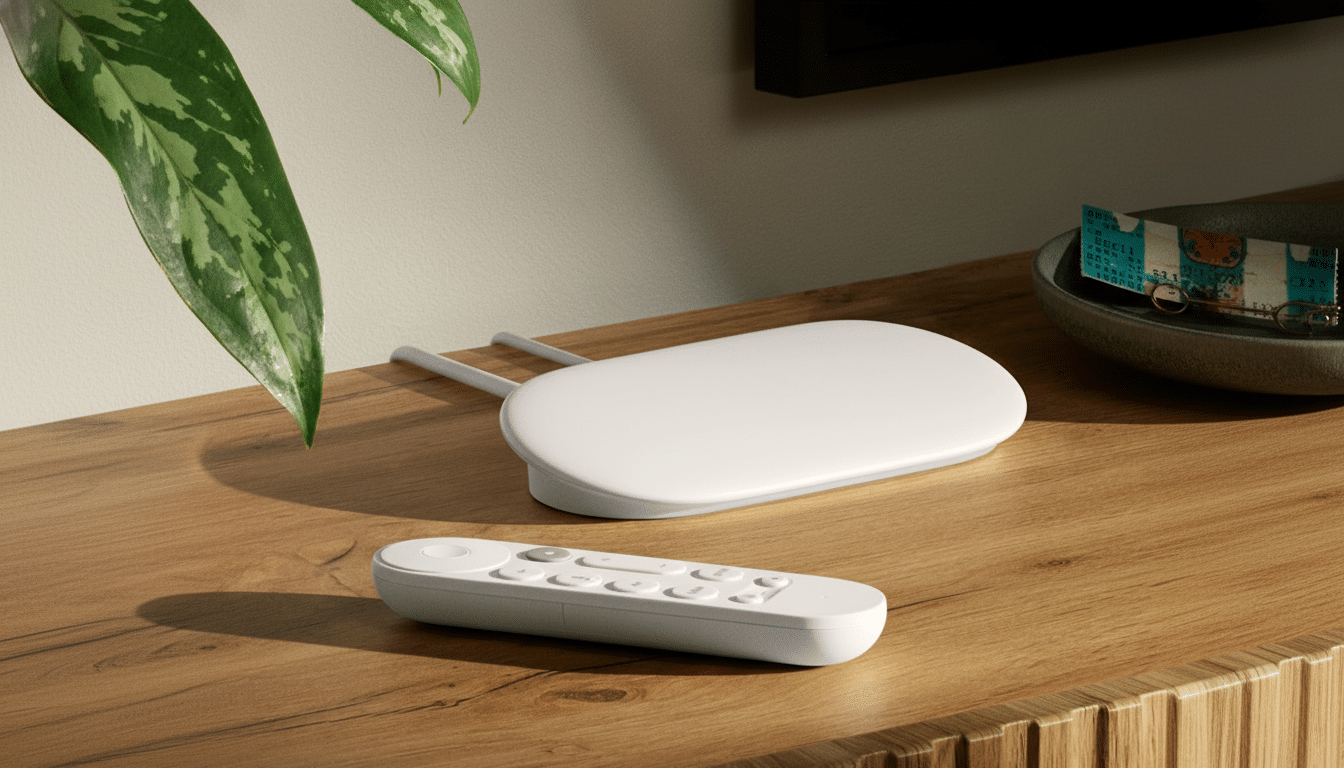Google is updating the software in its Google TV Streamer so that it will include some of the company’s newest conversational AI directly in users’ living rooms. The change reflects recent updates made across Google’s ecosystem and suggests that the transition away from the legacy Assistant experience might now be happening more quickly.
Tap the microphone button on the Google TV remote and you get Gemini for TV when this update arrives. Viewers will not need to issue precise commands; instead, they can speak informally to find movies and shows, along with sports; ask follow-up questions; and fine-tune recommendations on the fly.
- What changes on Google TV streamer with Gemini voice
- Part of a wider Assistant sunset across Google platforms
- Rollout timeline and how to get the Gemini update on TV
- Why Gemini on Google TV matters for streaming discovery
- Privacy, data handling, and controls for Gemini on TV
- The bottom line on Gemini replacing Assistant on TV

What changes on Google TV streamer with Gemini voice
Gemini’s pitch on TV is straightforward: less keyword hunting, more conversational discovery. Ask it for “something light, under two hours, that’s good for teens,” or “a thriller like the last one we watched but with better reviews,” and Gemini brings suggestions from across installed services. And you iterate — “shorter,” “newer,” “funnier” — without starting from scratch.
Google also positions Gemini as a helper outside of content. According to the company, you can ask for step-by-step DIY help or a kid-friendly explanation of a homework topic and pull up a recipe, all without ever leaving your TV screen. What’s under the hood: Gemini’s larger context window, which Google Research emphasized with its own 1.5-generation models, should enable Gemini to keep in mind longer multi-step interactions.
On the user interface end, folks should see refreshed prompts and branding in the voice UI. While core TV actions like opening apps, searching, and navigating the catalog are still available here, it’s now ornamented with a much more conversational interface that can understand longer, multi-intent requests.
Part of a wider Assistant sunset across Google platforms
The toggle on Google TV Streamer comes after Gemini has taken over voice interactions in Android Auto and after Google announced it would remove the ability to switch between Assistant and Gemini in the market. The approach reflects the company’s previously stated intentions to consolidate consumer AI experiences as part of Gemini — and not have two parallel assistants.
The timing matters for scale. The company has already revealed that Android TV OS serves hundreds of millions of monthly active devices around the world, so Gemini is offering a lot of new surfaces for everyday use. When more touchpoints move, expect feature parity to get better, and edge cases — hands-free car voice commands versus ten-foot TV hunting — to become specifically tuned.
Rollout timeline and how to get the Gemini update on TV
Google says the update is rolling out over the next few weeks, so expect availability to stagger. You don’t have to do much: keep your streamer and Google TV apps updated, then press the mic button and search for the Gemini prompt. If you don’t yet see it, the update may not have arrived for your device or region.

At launch, the availability of languages may vary, and some features and content will also vary by market. If you’re using kids’ profiles or restricted profiles, your limits on what Gemini can open or recommend will be tighter than what’s available via Google TV’s current parental controls.
Why Gemini on Google TV matters for streaming discovery
Streaming libraries are large and disconnected from each other. Nielsen has consistently found that streaming holds the largest share of total time spent with television content in America, but viewers continue to be riddled with indecision over what to watch. Leaning into natural conversation and more informed context, Gemini could shrink the decision loop while increasing satisfaction — both critical in stanching app-hopping and fatigue.
There are ecosystem implications, too. For studios and apps, metadata quality is especially important: the better the tags, the richer the Gemini-driven recommendations. Continued guidance is to be expected from Google’s Android TV documentation on deep linking and content feeds, ensuring titles are discoverable through voice and AI-led surfaces.
Privacy, data handling, and controls for Gemini on TV
Account-level controls are still respected for voice interactions on television. Users can also control data and audio activity in their Account settings for Google, see past queries, and influence personalization. Just like on other Gemini devices, some responses are processed in the cloud to allow for more advanced reasoning; device-side settings can be adjusted for desired levels of data saving — an effort to enable future personalization.
The bottom line on Gemini replacing Assistant on TV
Google TV Streamer ditching Assistant for Gemini is about more than just a name change — it’s changing the way you search, learn, and choose what to watch from your couch. If all that chatter from Gemini turns into faster, better recommendations — and useful “second screen” suggestions without any need to leave the big screen — it’ll be how plenty of households decide to hang with their TV.
Keep an eye out for continued feature refinement, more language options, and closer ties to your viewing habits as the rollout widens. For now, the writing is on the wall: when it comes to voice on Google’s TV hardware, Gemini is where the future lies.

